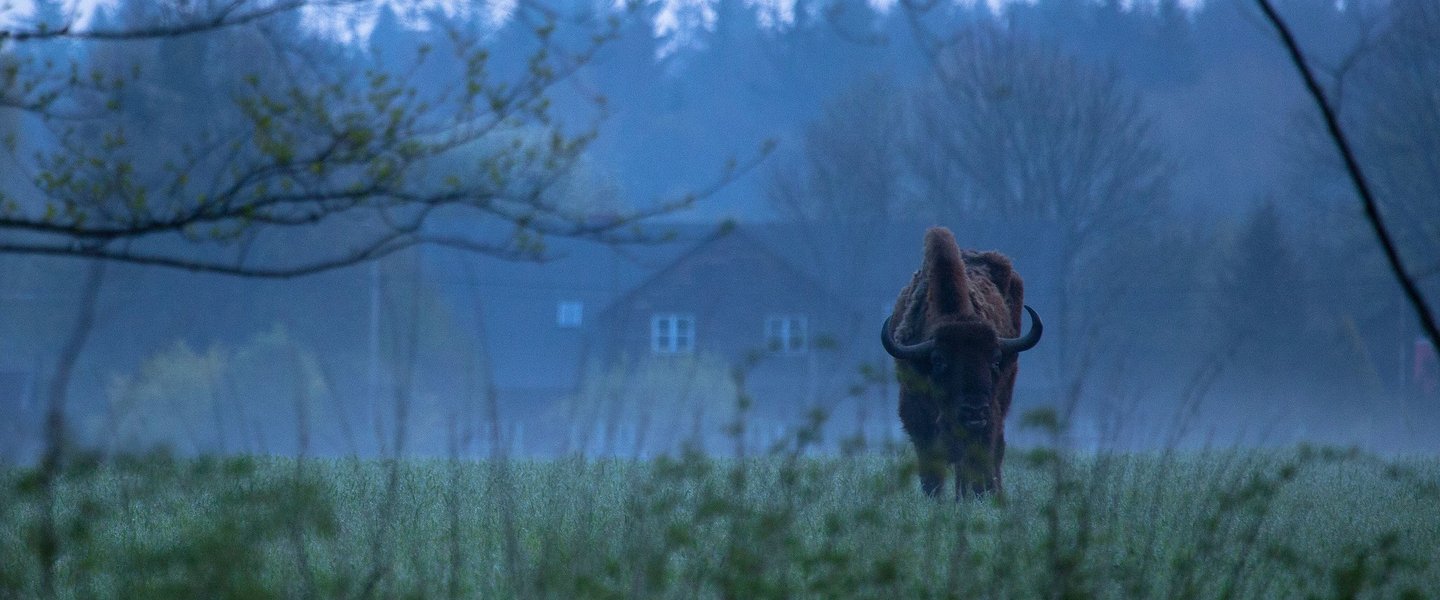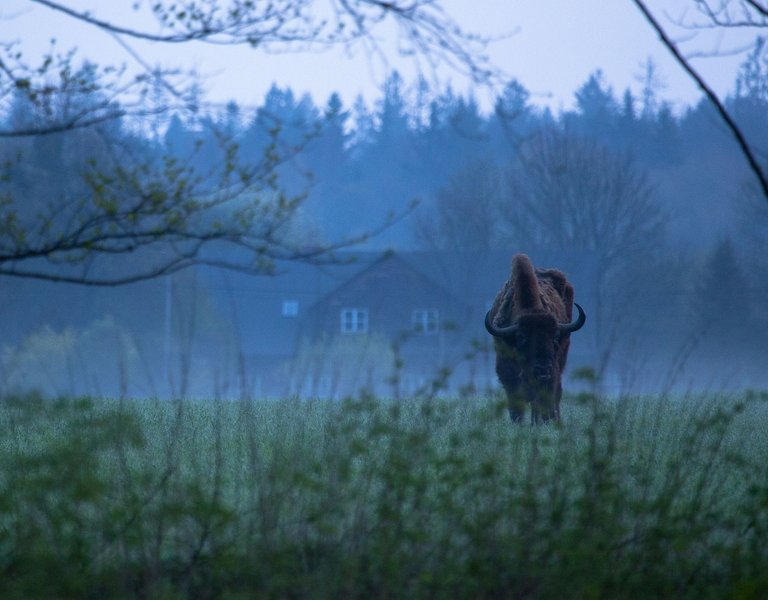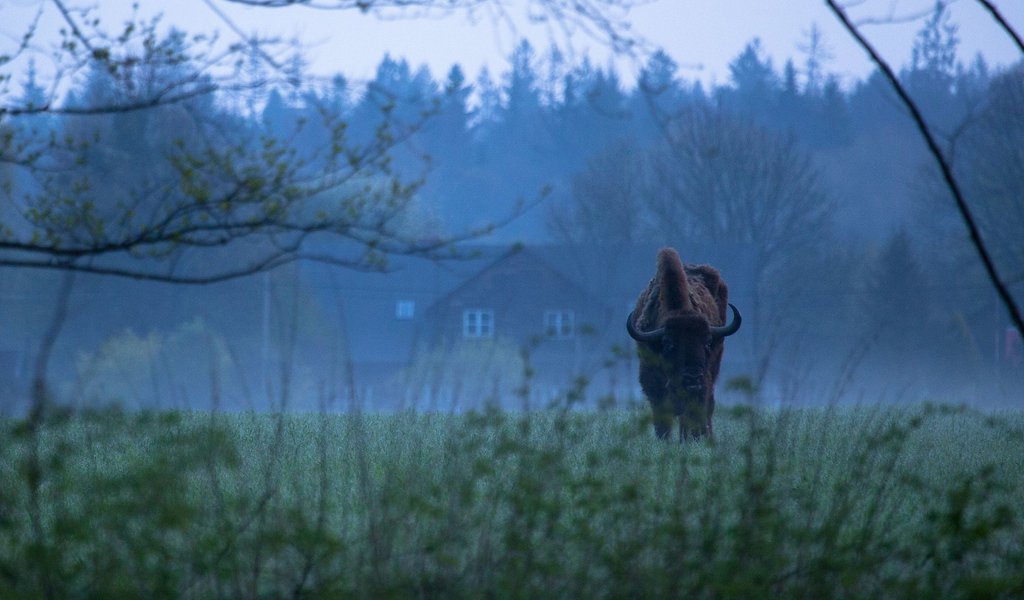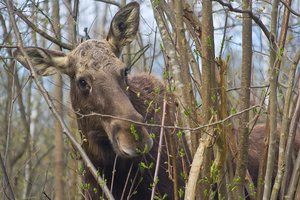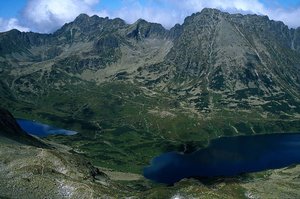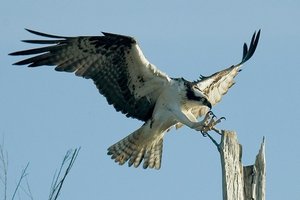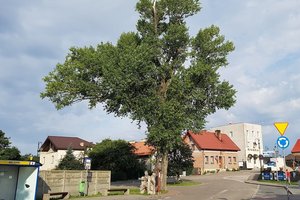Podkarpackie/ Bieszczady Mountains are home to a growing number of European bison
551 European bison live in the Bieszczady Mountains according to this year`s inventory. At the end of last year, there were nearly 500 individuals, the spokesman of the Regional Directorate of State Forests in Krosno, Edward Marszałek told.
He added that the number of bison was determined on the basis of monitoring of herds in the Bieszczady Forest Districts. Monitoring has been conducted since 2011 with photo traps, among other things.
Marszałek emphasized that in recent years there had been a clear increase in the number of bison. He reminded that in 2012, 256 wild bison were counted, in 2013 - 270 bison, a year later - 303 bison.
The spokesman pointed out that the growing number of bison was causing more damage in forest stands and agricultural crops.
"This results in a decrease in social acceptance for this species. More people are displeased with the bison presence, because the damage affects private landowners, hence the increasingly strong signals from the local community demanding to +take bison to the forest+" - said Marszałek and added that the 2007 European bison protection strategy set the maximum number of this species in Bieszczady at 400 individuals.
Matters related to the damage caused by bison to agricultural and forest crops, as well as disease threats concerning these protected mammals, were the topics of the European Bison Protection Committee meeting. The committee is an advisory body to the director of Regional Directorate of State Forests in Krosno.
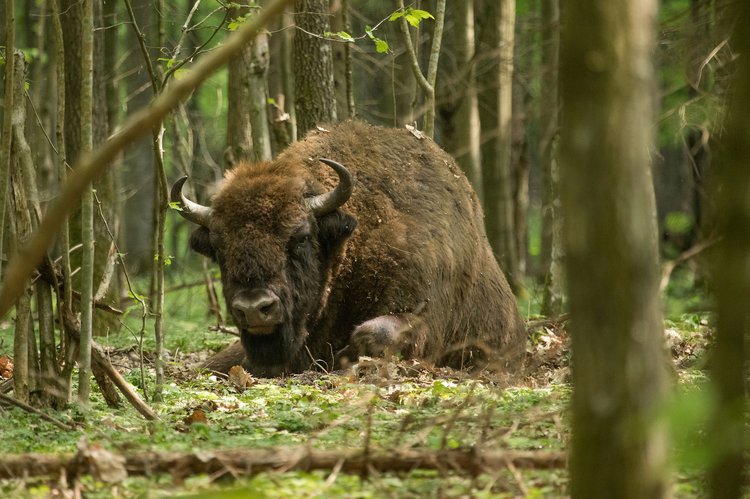 The committee members include scientists involved in the protection of the European bison, veterinarians, as well as forest inspectors of the Bieszczady Forest Districts, directly supervising the wild herds.
The committee members include scientists involved in the protection of the European bison, veterinarians, as well as forest inspectors of the Bieszczady Forest Districts, directly supervising the wild herds.
During the meeting, the voivodship veterinarian Mirosław Welz presented information about the health status of the herd in the Bieszczady Mountains and informed about cases of tuberculosis in boars in this area.
"In connection with this situation, diagnostic culling of selected bison was proposed in order to examine the health status of the herds. Experts are concerned that diseases are an increasingly common cause of bison death"- Marszałek noted.
In the years 2011-2017, there were 37 cases of death in the western subpopulation of the Bieszczady bison, 10 of which could be attributed to various diseases or pathologies. "Unfortunately, in many cases the condition of the discovered carcass made it impossible to determine the cause of death" - the spokesman said.
In turn, the Sanok poviat veterinarian Stanisław Kaczor informed about the increase in the number of cases of telasiosis in Bieszczady bison.
This disease is caused by nematodes feeding in the eyeballs of ruminants. It causes severe suffering and leads to death.
"Due to the fact that it is infectious, the committee recommends the elimination of infected individuals, as well as weakened individuals, particularly vulnerable to other pathogens. The first case of telasiosis in Bieszczady bison was found in 2012" - Marszałek added.
During the committee meeting, the president of the European Bison Friends Society, Prof. Wanda Olech informed about the planned catching and resettlement of 9 Bieszczady bison to Romania.
The first bison were brought to the Bieszczady Mountains in 1963. They belong to the Białowieża-Caucasian breed. They are descendants of a male bison from the Caucasus and females from zoological gardens and private zoos.
Caucasian and Białowieża bison crossbreeds are a separate breeding line. Currently, in the wild, they are found only in the Bieszczady Mountains. Bison of the pure Białowieża line live in the other centres in Poland.
SOURCE: (PAP)
author: Wojciech Huk
huk/ je/ kap/
tr. RL
25.07.2019
